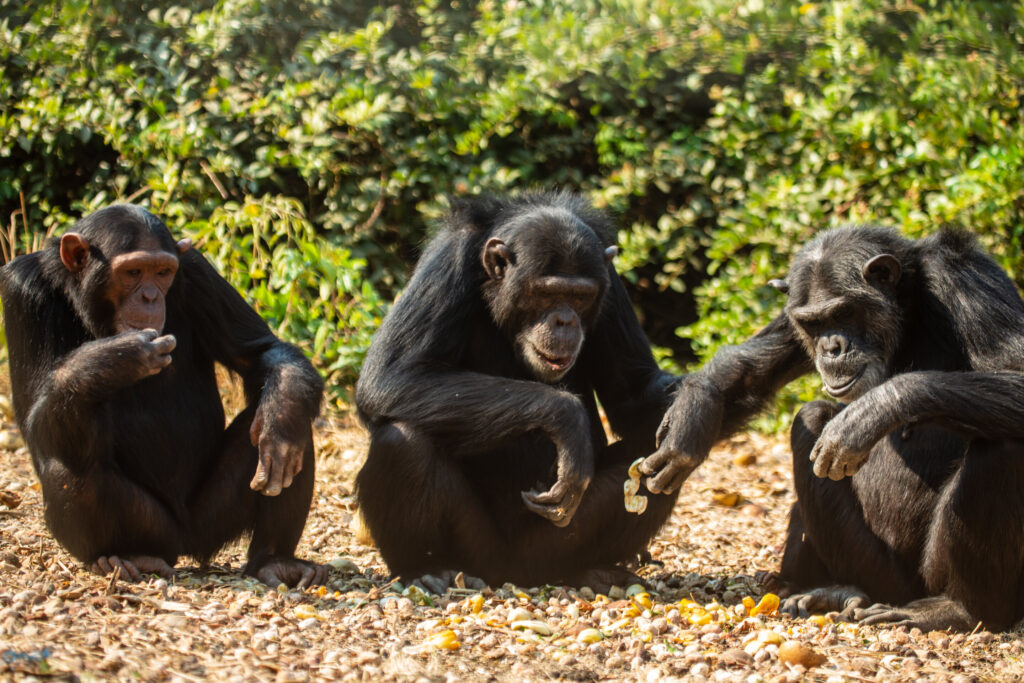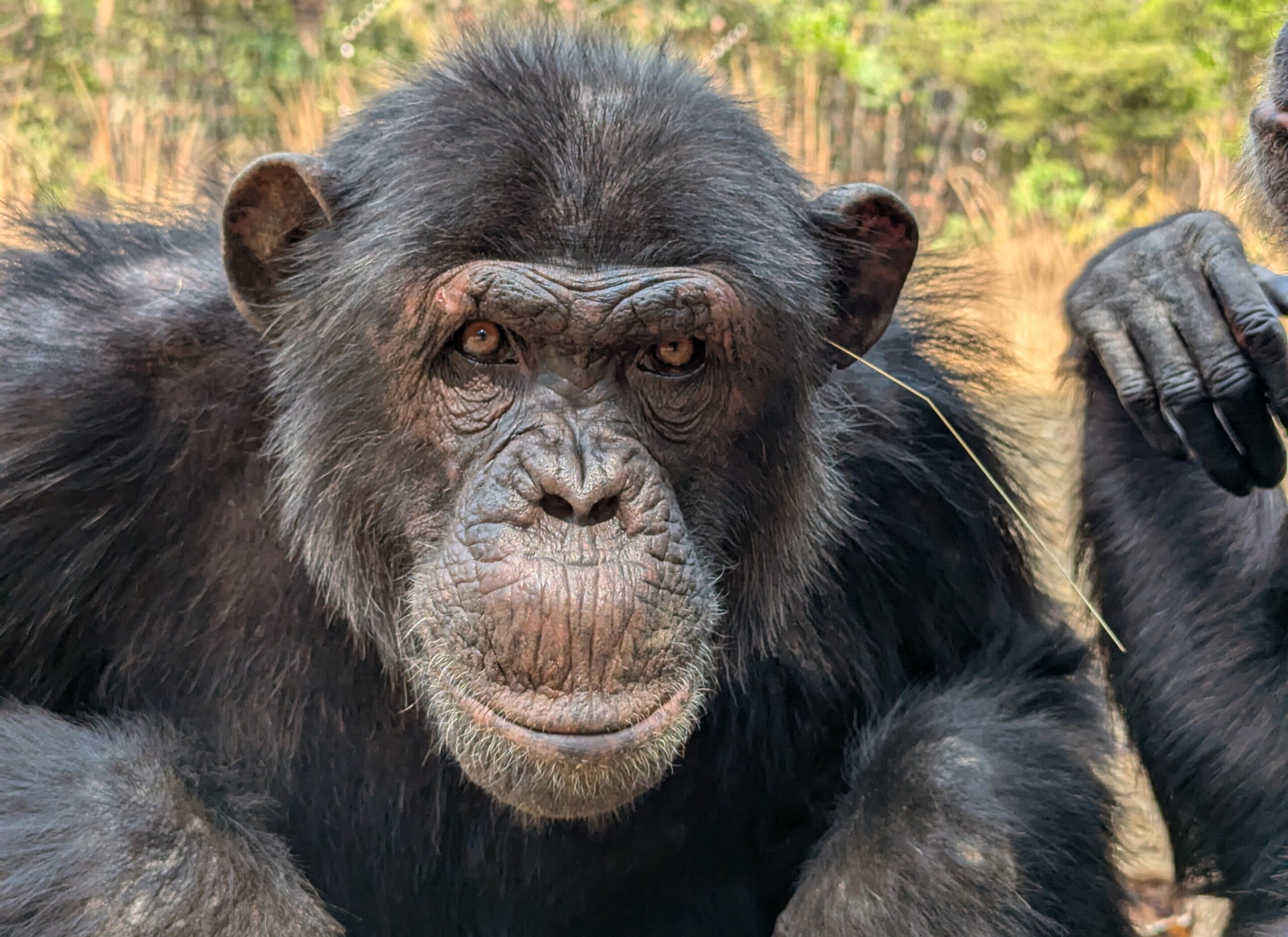Val, an adult male chimpanzee performing the ‘grass-in-ear’ behavior. Credit: Jake Brooker/Chimfunshi Wildlife Orphanage Trust
Is culture truly human—or do chimpanzees have their own fashion fads?
Imagine a chimpanzee delicately tucking a blade of grass into its ear—not for survival, not for food, but just because others are doing it. That’s exactly what researchers recently observed at Chimfunshi Wildlife Orphanage in Zambia, where our closest relatives seem to have sparked a peculiar “fashion trend.”
A trend without function—but full of meaning
In a newly published study in the journal Behaviour, scientists from Utrecht University and Durham University discovered that a group of chimpanzees had begun inserting blades of grass into their ears—or in some cases, their rears. No food, no grooming purpose—just an oddly specific behavior spreading among peers.
Out of eight chimps studied, five adopted the ear-blade behavior, and six tried the rear-based variant. How did it spread? Through social learning. The scientists used a method called network-based diffusion analysis to rule out random chance or isolated learning. In short: chimpanzees were copying each other.

Three female chimpanzees of varying ages in one of Chimfunshi’s diverse social communities. Credit: Jake Brooker/Chimfunshi Wildlife Orphanage Trust
What does chimp fashion tell us about human culture?
This seemingly pointless trend might carry deep meaning. According to the study, these behaviors mimic the essence of human cultural fads—actions that hold no functional value but build group identity and cohesion. Like teenagers wearing the same band t-shirts, these chimps are saying: “I’m one of you.”
This isn’t the first time animals have displayed such traditions. Killer whales off the Pacific Northwest coast have been seen balancing dead salmon on their heads—a trend marine biologists dubbed “salmon hats”. Like fashion trends in humans, these odd behaviors reflect social connection, creativity, and perhaps even symbolic thinking.
This discovery even parallels research into language development in other species—like the bubble ring vocalizations of humpback whales, or even the cognitive coordination shown by wild fish navigating social hierarchies. Culture, it seems, wears many skins.
A mirror to our evolutionary past
One researcher likened it to a ripple in the water—a small act that reveals the depth beneath. These chimpanzee trends may be cultural “glimmers,” offering evidence that the roots of symbolic behavior—and perhaps even fashion—go far beyond Homo sapiens.
This discovery challenges a long-held belief: that only humans create arbitrary traditions to bond groups together. As these chimps show, culture may not start with logic, but with imitation—and imitation might just be the first stitch in the fabric of society.
Curious minds—what do you think? Are these chimps just playing… or are they pioneers of culture? Share your thoughts in the comments and explore related stories to uncover more wonders of animal intelligence.
Research DOI: 10.1016/j.anbehav.2024.06.007










